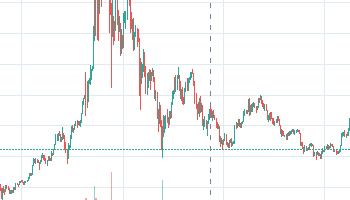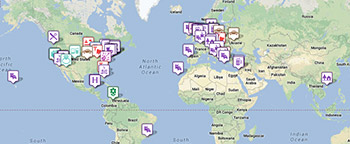Bitcoin aimed at small payments for Internet users
Blockchain is a large-scale computer group (computers are connected in an equal relationship) that was conceived to realize the virtual currency "bitcoin" and that was peer-to-peer (P2P) connected (one-on-one communication) on the Internet. Distributed system technology. The paper that can be said to be the starting point is "Bitcoin: A Peer-to-Peer Electronic Cash System", which was published in the name of Satoshi Nakamoto in 2008.
Bitcoin is a virtual currency developed with the aim of allowing Internet users to use it safely with cheap fees when conducting business transactions on the Internet. An issue that is of paramount importance when making electronic payments is "multiple payments." Unlike cash payment, there is a time lag between purchase and payment in electronic commerce.
It is essential to have a mechanism that does not multiplex billing and payment activities. Therefore, when Internet users make commercial transactions on the Internet, it is common to pay the commission to an intermediary company that has built a mechanism that does not allow multiple payments and use that mechanism.
In contrast, Bitcoin implements electronic payment (bitcoin remittance) without intermediaries by incorporating a mechanism that does not allow multiple payments in the P2P system. You'll need to pay a fee to maintain the system, but it's not as big as an intermediary.
Bitcoin is operated by a P2P system created by Internet users around the world running their own Bitcoin software on their computers.
The important point is that instead of installing a specific server for centralized management, all transaction records (remittance log) of Bitcoin are stored on all computers that make up the P2P system, and the stored data. It has a built-in mechanism that cannot be easily tampered with. If all transmission records are saved and cannot be tampered with, multiple payments will not occur.
Transactions are recorded as blocks, and the blocks are connected to create a transaction ledger.
Blockchain is a "system technology that does not cause multiple payments" built into the P2P system that realizes Bitcoin. With the advent of blockchain, it has been shown that the "value and credit of money" that has been relied on by countries and companies can be realized with the technology that the system has, and thus virtual currency that is not restricted by countries or companies is issued.・
There is a possibility that it can be used. In fact, during the financial crisis called the “Cyprus Shock” that occurred in 2013, the value of Bitcoin that can be traded at any time increased without being affected by the deterioration of national credit.
What is the mechanism that prevents multiple payments? The essence is that transaction records at fixed time intervals are made into special data blocks called "blocks", and blocks are linked to each other in time series and linked like a "chain". In other words, Bitcoin is creating a trading ledger for Bitcoin as a whole with "blocks and chains".
Bitcoin operation requires a large number of computers that make up the P2P system on the Internet. These computers operate 24 hours a day, 365 days a year, and have to record transaction data from all over the world in blocks at regular intervals. You can get the story of bitcoin fortress and get recommended secure platform for the bitcoin trading
What was brought in to stabilize this system was an incentive for participants who performed a large amount of computational processing for operation. Bitcoin will be issued to participants who have performed many calculations, and transaction fees will also be provided.
The calculation processing work for maintaining this system is called mining because it leads to the acquisition of Bitcoin. In order to earn rewards, it is necessary to finish the calculation processing earlier than other participants; so many companies are now installing large numbers of computers to operate the Bitcoin system and increasing the calculation processing capacity.
The introduction of incentives to maintain the system brings stability to the system from two perspectives. One is that many participants will continue to compete for system enhancement, and the entire system will continue to be strengthened.

 Updated every 10 minutes
Updated every 10 minutes


